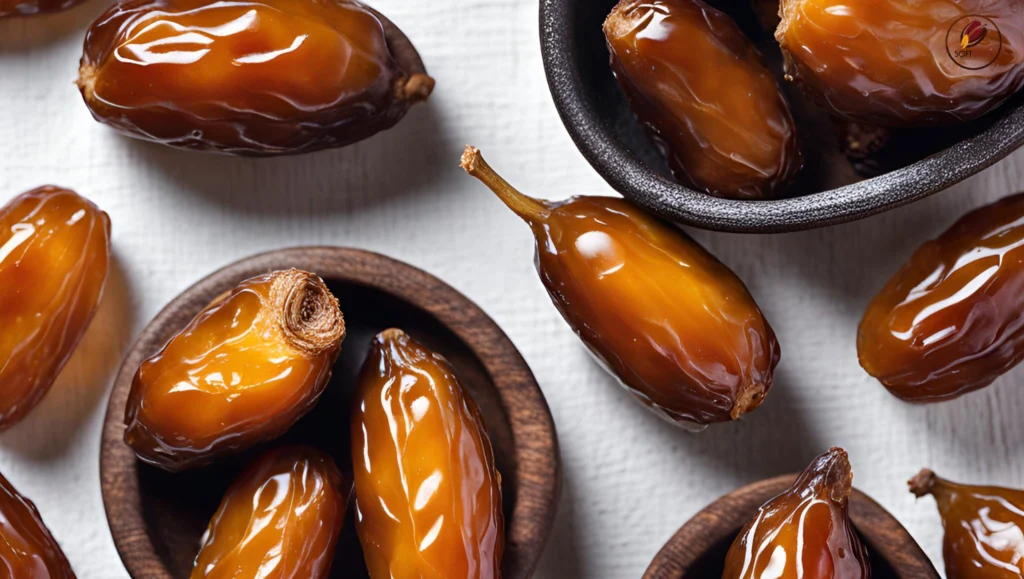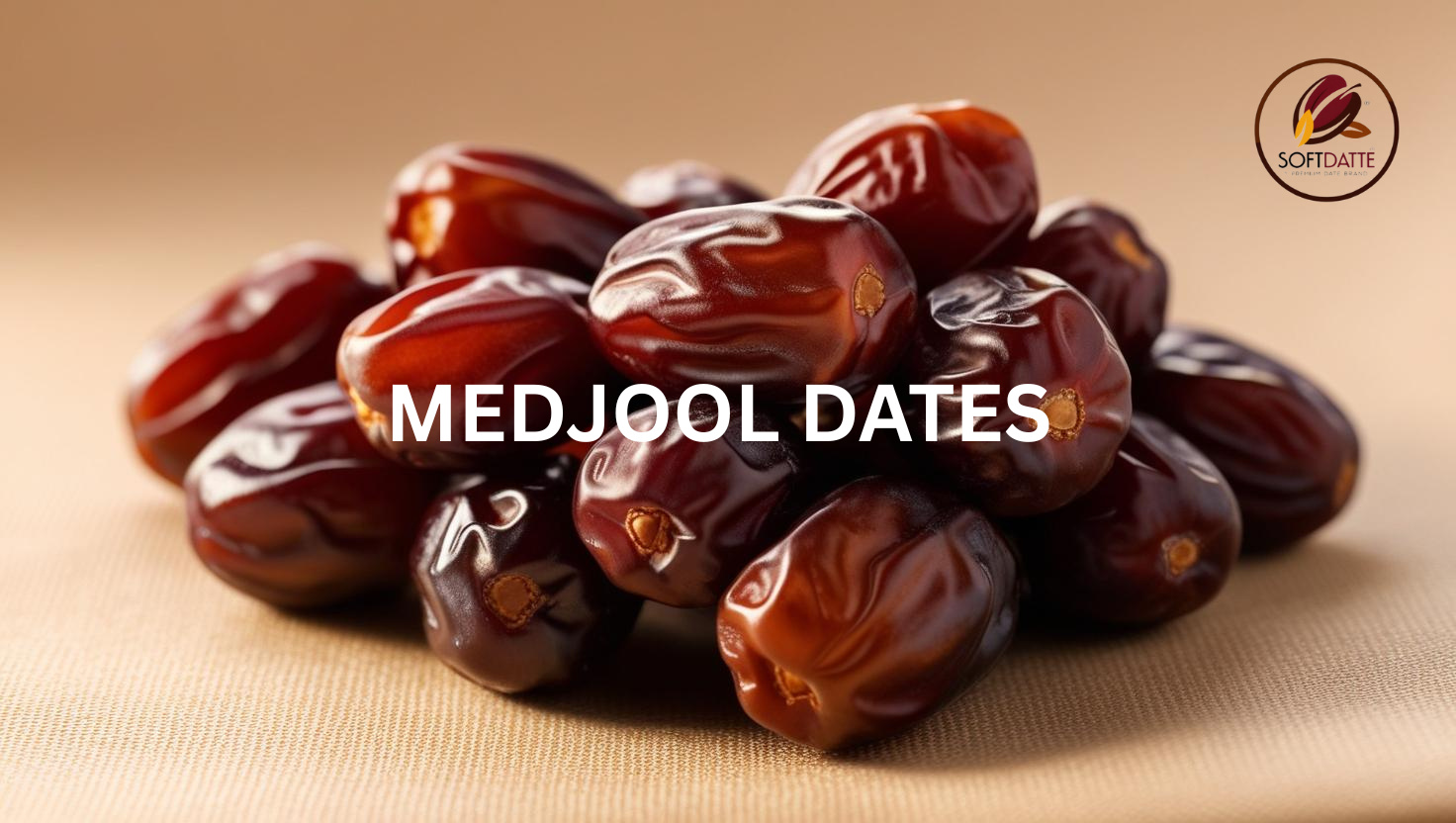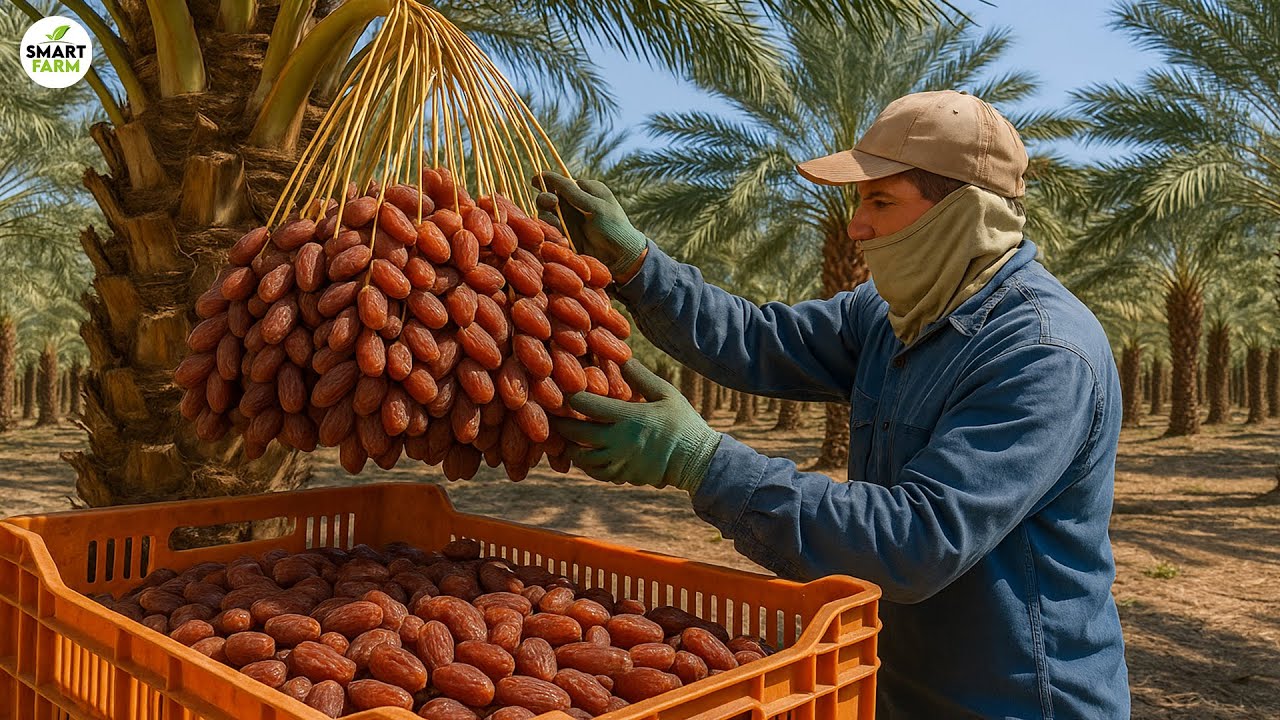There is no precise historical evidence about the exact origin of Medjool date cultivation, but it is believed that they originated from the Tafilalet oasis in Morocco, North Africa.
However, the name “Medjool” may seem strange (an Arabic word meaning unknown), since the inhabitants of this region mainly spoke Berber and not Arabic. This name was probably given when the Arabs arrived in North Africa.Cependant, l’appellation “Medjool” peut sembler étrange ( un mot arabe qui veut dire inconnu), car les habitants de cette région parlaient principalement le berbère et non l’arabe. Ce nom aurait probablement été donné lorsque les Arabes sont arrivés en Afrique du Nord.
Medjool dates remain an important part of the culture and cuisine of Middle Eastern populations today.
Regions where Medjool dates are cultivated
Medjool date palms grow in a hot, dry desert climate, with occasional low rainfall, which favors their proper development. They are generally cultivated in irrigated desert oases, similar to those where Deglet Nour dates are found. Medjool palms are tolerant of saline soils and can grow in land rich in salts, making them well suited to regions with limited freshwater resources.
The male and female flowers of date palms grow on separate trees: male flowers grow on one tree and female flowers on another. Pollination is carried out manually by farmers, who collect pollen from the male trees and place it on the female flowers, just as is done with Deglet Nour dates.
The harvest takes place when the dates are fully ripe, turning dark brown or reddish-brown in color, depending on the variety.
Medjool dates are cultivated in various regions around the world, particularly in countries such as Jordan, Palestine—their place of origin—Morocco, as well as in smaller quantities in Algeria, South Africa, Australia, and the United States.
The United States is now the world’s leading producer and exporter of Medjool dates. Their cultivation was introduced there in 1920 by the American botanist and agronomist Walter Swingle, after drought and disease had decimated the palm trees in Morocco. Swingle collected offshoots from Moroccan palms and planted them in the deserts of Nevada, Arizona, and California, where their cultivation achieved great success, establishing the United States as the top global producer of Medjool dates.
Characteristics of Medjool Dates
Physical Characteristics
Medjool dates are among the largest date varieties in the world. They measure between 5 and 6 cm in length and weigh between 15 and 20 g. They have an oval shape, a smooth texture, and a thin skin of dark brown color with reddish tones. Wrinkles sometimes appear on their surface, indicating full ripeness. Their taste is extremely sweet and delicious.
Nutritional Characteristics
100g of Medjool Dates
| Water | 21.3g |
| Energy | 277kcal |
| Protein | 1.81g |
| lipides | 0.15g |
| Carbohydrate | 75g |
| fibres | 6.7g |
| sucre total | 66.5g |
| saccharose | 0.53g |
| Glucose | 33.7g |
| Fructose | 32g |
| Calcium, Ca | 64mg |
| fer, Fe | 0.9mg |
| Magnesium, Mg | 54mg |
| Phosphore, P | 62mg |
| Potassium, K | 696mg |
| Sodium, Na | 1mg |
| Copper, Cu | 0.362mg |
| Zinc, Zn | 0.44mg |
| Manganese, Mn | 0.296mg |
It is an excellent nutritious food and a good source of energy. One hundred grams of Medjool dates provide 277 calories, with 75 g of carbohydrates, 1.81 g of protein, and 6.7 g of fiber. They are also rich in minerals such as magnesium, calcium, and iron.
Regarding potassium, 100 g of dates contain 696 mg, which represents about 15% of the daily potassium requirement. This amount can help support heart health and regulate blood pressure.
Storage and Preservation
Short-Term Storage
1-Domestic Use
For domestic use over a few days or weeks, dates can be stored in airtight containers in a dry place, away from direct sunlight, and at room temperature (up to 25°C).
If the storage period exceeds one month, it is best to keep them in the refrigerator at a temperature between 0 and 4°C. Ideally, they should be stored in plastic containers specially designed for keeping fruits and vegetables fresh.
Commercial Use
For commercial use and storage not exceeding 6 months, dates should be kept in a refrigerator at a temperature between 0 and 4°C, with a humidity level of 60% to 70%. They should be placed in containers specially designed for storing fresh fruits and vegetables, or in vacuum-sealed plastic bags. This helps keep the dates fresh, protects them from moisture, and prevents any mold growth.
Long-Term Storage
For long-term storage exceeding 6 months, Medjool dates should be kept frozen at a temperature of -18°C, with a humidity level between 50% and 60%. They should be placed in special airtight containers designed for freezer storage to prevent moisture infiltration or the formation of freezer burn.
Long-Term Storage Conditions for Medjool Dates
Environment
Temperature
The temperature should be around -18°C in a clean area, free from vegetables, fruits, or other stored products.
Humidity
The humidity level should be maintained between 50% and 60% to ensure proper preservation of the dates and to prevent any mold growth or deterioration.

Frequently Asked Questions (FAQ)
Why are Medjool dates expensive?
First of all, their high quality justifies their price. In addition, a Medjool palm tree takes between 7 and 10 years before it begins to produce fruit. The yield of each palm is also lower compared to other date varieties. Added to this are the costs of harvesting, sorting, storage, and transportation, all of which contribute to their high price.
What is the origin of Medjool dates?
They are believed to have originated from the Tafilalet oasis in Morocco, North Africa.
What are the health benefits of Medjool dates?
dattes medjool est riche en sucre naturel et en minéraux et un aliment très énergétique et bénéfique .mais il faut consommer avec moderation



